Related Research Articles
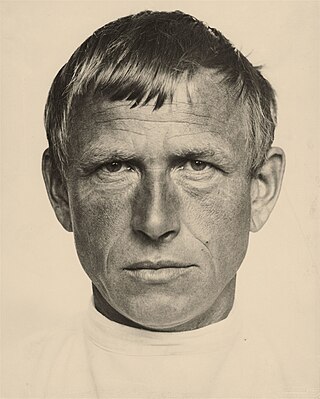
Wilhelm Heinrich Otto Dix was a German painter and printmaker, noted for his ruthless and harshly realistic depictions of German society during the Weimar Republic and the brutality of war. Along with George Grosz and Max Beckmann, he is widely considered one of the most important artists of the Neue Sachlichkeit.

Karl Schmidt-Rottluff was a German expressionist painter and printmaker; he was one of the four founders of the artist group Die Brücke.
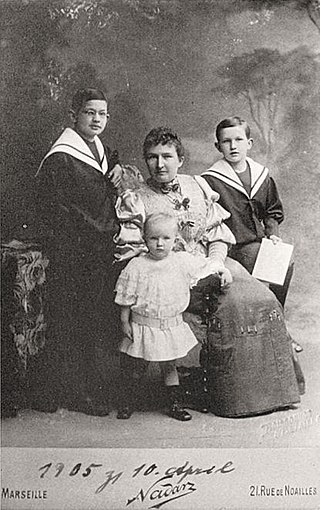
Charles Crodel was a German painter and stained glass artist.
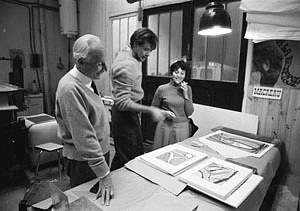
Bramvan Velde was a Dutch painter known for an intensely colored and geometric semi-representational painting style related to Tachisme, and Lyrical Abstraction. He is often seen as member of the School of Paris but his work resides somewhere between expressionism and surrealism, and evolved in the 1960s into an expressive abstract art. His paintings from the 1950s are similar to the contemporary work of Matisse, Picasso and the abstract expressionist Adolph Gottlieb. He was championed by a number of French-speaking writers, including Samuel Beckett and the poet André du Bouchet.

Ralf Winkler, alias A. R. Penck, who also used the pseudonyms Mike Hammer, T. M., Mickey Spilane, Theodor Marx, "a. Y." or just "Y" was a German painter, printmaker, sculptor, and jazz drummer. A neo-expressionist, he became known for his visual style, reminiscent of the influence of primitive art.

Walter Gramatté was a German expressionist painter who specialized in magic realism. He worked in Berlin, Hamburg, Hiddensee and Barcelona. He often painted with a mystical view of nature. Many of his works were inspired by his experiences in the First World War and his illness.

The Brücke Museum in Berlin houses the world's largest collection of works by members of the group Die Brücke, an early 20th-century German expressionist movement.

Paul Gösch, also Goesch or Göschen, was a German artist, architect, lithographer, and designer of the early twentieth century; he was associated with the main elements of German Expressionism.
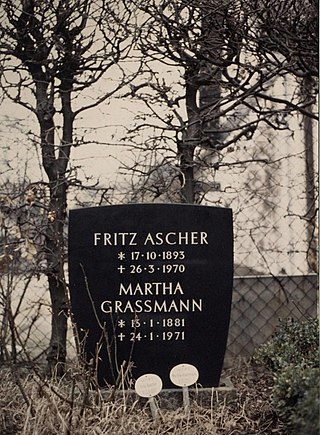
Fritz Ascher was a German artist, whose work is characterized by Expressionist and Symbolist sensitivity. In paintings, works on paper and poetry he explored existential questions and themes of contemporary social and cultural relevance, of spirituality and mythology. Ascher's expressive strokes and intense colors create emotionally intense and authentic work.
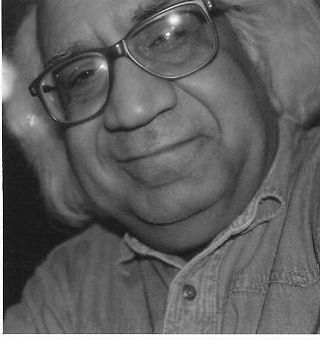
Mahirwan Mamtani is painter, graphic and multimedia artist.

Otto Müller was a German painter and graphic designer.
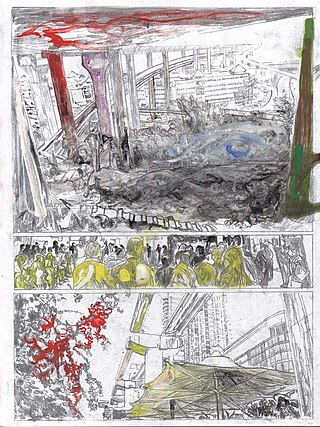
Stefan Ettlinger is a German painter and draughtsman. He studied at the Kunstakademie Düsseldorf at Alfonso Hüppi as a master student. He lives and works in Düsseldorf.
Harry Weinberger (1924–2009) was an artist based in England. He was 'a trenchant defender of traditional painting', who fought against the dominant art school conventions of his day. Primarily a painter with a love of colour, Weinberger also taught art and illustrated books. He rarely painted people. Weinberger preferred to paint interiors and objects within them. He never dated his work. Harry Weinberger died at the age 85 on 10 September 2009.
Sabine Hornig is a German visual artist and photographer who lives and works in Berlin. Her work in photography, sculpture, and site-specific installation art is known for her interpretations of modernist architecture and contemporary urban life. Her work has appeared in solo exhibitions throughout the world, including Double Transparency at Art Unlimited Basel in Switzerland (2014) and Projects 78 at the Museum of Modern Art in New York (2003), and in numerous group exhibitions at institutions like the J.Paul Getty Museum in Los Angeles and ICA London.

Alfred Hess was a German Jewish industrialist and art collector.
Wang Xiaosong is a Chinese artist and professor. Having studied in Beijing and Berlin from 1983 to 1997, Wang uses a confluence of Chinese and Western art in his works.
Johann Büsen is a German visual artist.
The Galerie Nierendorf is a commercial art gallery based in Berlin founded by Karl and Josef Nierendorf in 1920, and reopened in 1955 as the Galerie Meta Nierendorf by Florian and Inga Karsch.

Max Wilhelm Waldemar Dungert was a German painter and graphic artist.

Franz Joseph Esser was a German painter, watercolorist, caricaturist, draftsman and graphic artist who was both close to the Cologne Progressives and a member of the Nazi party.
References
- L.TAVERNIER: Rudolf Bredow, in: Weltkunst 61 (1991), H. 11, S.1644.
- G. MEISSNER, L.TAVERNIER: Rudolf Bredow (1909–1973). Expressionist aus Überzeugung. Mit einem Verzeichnis der Ölgemälde, Aquarelle, Farbkreiden und farbigen Figurinen. München: Hirmer 1995.
- G. MEISSNER: Rudolf Bredow, in: Allgemeines Künstlerlexikon, Bd. 14, München/Leipzig: Saur 1996, S.60-61.
- CHR. HORNIG: Rudolf Bredow. In: Weltkunst 66 (1996), H. 5, S.531.
- L. TAVERNIER: Rudolf Bredow, in: Dictionary of Art, vol. 4, London/New York: MacMillan 1996, S.732.
- I. MÜLLER: Rudolf Bredow. www.kunstmarkt.com (12.09.2001)